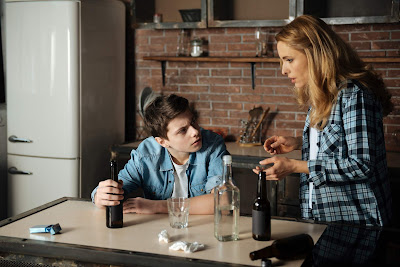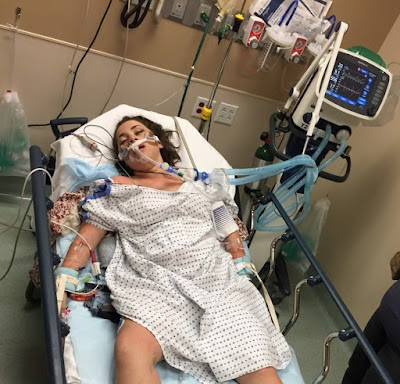What about analgesics and young people?
Analgesics, commonly known as 'painkillers', are exactly that - drugs that are designed to relieve physical pain. There are a variety of medications that a doctor may prescribe a patient, but for the purpose of this piece we will be discussing some of the commonly used over-the-counter (OTC) analgesics, such as:
If you look at the results of the 2011 Australian Secondary Students Alcohol and Drugs (ASSAD) Survey you will see that the reported use of substances such as Panadol among school-based young people is extremely high. Among the entire sample, only four per cent of students had never used these medications. Over two-thirds of all students had used analgesics in the past month. As in previous surveys, at all ages, females were significantly more likely to have used analgesics in their lifetime, in the past year and past month. Females were more likely to have used analgesics in the past week at all ages except 12 years of age.
Should we be concerned about this use? Is there anything wrong with young people using these products? I'm certainly not saying that we shouldn't be helping our teenagers when they have pain - but I do think we have to start asking ourselves is a pill always the best answer?
Years ago I was told by a GP (although I haven't seen a reference for this) that around 90% of adolescent headaches are caused by dehydration and simply instructing your son or daughter to have a glass of water is most probably going to fix the problem pretty quickly. Here's a challenge to you. Think about the last time your child complained of a headache or a pain, what was the first thing you said to them? I can almost guarantee that you told them to go and take a pill of some description. I bet that you didn’t ask them why they had a headache or suggest a non-pharmaceutical option – you went for the quick fix. You went for the option that pharmaceutical companies have been extremely successful at selling us. We all do! Even though we're always told 'to see a doctor if pain persists' and 'to always use as directed' - grabbing a pill or capsule from the medicine cabinet is the easy option. It has got to the point that using a drug to solve a problem has become second nature and I believe this is why we're seeing young people use these OTC painkillers in such a bizarre way.
No-one wants to see anyone experiencing pain and certainly if there is a way to fix the problem we should use it but if we're going to provide our children with a pharmaceutical product we must make sure that we teach them to respect it and also understand how important it is to use it responsibly. It is also vital that they understand if they use it inappropriately then there could be severe consequences.
This doesn't take much effort. The next time you are thinking of providing a Panadol to your child (no matter how old they are - even teenagers (actually, especially teenagers!) need to be reminded that these products need to be used as directed), read the directions out loud to them. Have a brief discussion about the correct dosage and how many can be taken in a 24 hour period. If you're about to pop a Nurofen, make sure your teen sees you have a quick read of the packaging before you take it. Comment on your use. If you're buying a packet of Nurofen Plus or another product that you need to request from the pharmacist and your child is with you, have a quick chat about what he or she said to you as they were handed over (i.e., "make sure you take with food" or "are you on any other medication?"). Don't make it a big deal but make it clear that there are rules when you use any medication - any pharmaceutical product is potentially harmful if used incorrectly.
Parents often complain that it is difficult to begin a conversation about drugs - how about starting with the drugs you provide them?
- aspirin
- codeine (usually in combination products)
- paracetemol
- ibuprofen
- a 15 year old girl who was using 4 Panadols at a time because she was feeling depressed
- a Year 11 young man who was taking two Nurofen to ease his anxiety before taking an exam
- a group of young men who played football for their school who took a couple of Nurofen Plus before a game just in case they received an injury during the match
If you look at the results of the 2011 Australian Secondary Students Alcohol and Drugs (ASSAD) Survey you will see that the reported use of substances such as Panadol among school-based young people is extremely high. Among the entire sample, only four per cent of students had never used these medications. Over two-thirds of all students had used analgesics in the past month. As in previous surveys, at all ages, females were significantly more likely to have used analgesics in their lifetime, in the past year and past month. Females were more likely to have used analgesics in the past week at all ages except 12 years of age.
Not surprisingly, the most common reason for analgesic use for males and females was to
help ease the pain associated with a headache/migraine while the second most common
reason was to help ease symptoms of a cold or ‘flu. Interestingly, at each age more males than
females reported using analgesics to help relieve pain from a sports injury.
Just under 10% of females reported using analgesics to help with menstrual pain.
Should we be concerned about this use? Is there anything wrong with young people using these products? I'm certainly not saying that we shouldn't be helping our teenagers when they have pain - but I do think we have to start asking ourselves is a pill always the best answer?
Years ago I was told by a GP (although I haven't seen a reference for this) that around 90% of adolescent headaches are caused by dehydration and simply instructing your son or daughter to have a glass of water is most probably going to fix the problem pretty quickly. Here's a challenge to you. Think about the last time your child complained of a headache or a pain, what was the first thing you said to them? I can almost guarantee that you told them to go and take a pill of some description. I bet that you didn’t ask them why they had a headache or suggest a non-pharmaceutical option – you went for the quick fix. You went for the option that pharmaceutical companies have been extremely successful at selling us. We all do! Even though we're always told 'to see a doctor if pain persists' and 'to always use as directed' - grabbing a pill or capsule from the medicine cabinet is the easy option. It has got to the point that using a drug to solve a problem has become second nature and I believe this is why we're seeing young people use these OTC painkillers in such a bizarre way.
No-one wants to see anyone experiencing pain and certainly if there is a way to fix the problem we should use it but if we're going to provide our children with a pharmaceutical product we must make sure that we teach them to respect it and also understand how important it is to use it responsibly. It is also vital that they understand if they use it inappropriately then there could be severe consequences.
This doesn't take much effort. The next time you are thinking of providing a Panadol to your child (no matter how old they are - even teenagers (actually, especially teenagers!) need to be reminded that these products need to be used as directed), read the directions out loud to them. Have a brief discussion about the correct dosage and how many can be taken in a 24 hour period. If you're about to pop a Nurofen, make sure your teen sees you have a quick read of the packaging before you take it. Comment on your use. If you're buying a packet of Nurofen Plus or another product that you need to request from the pharmacist and your child is with you, have a quick chat about what he or she said to you as they were handed over (i.e., "make sure you take with food" or "are you on any other medication?"). Don't make it a big deal but make it clear that there are rules when you use any medication - any pharmaceutical product is potentially harmful if used incorrectly.
Parents often complain that it is difficult to begin a conversation about drugs - how about starting with the drugs you provide them?




Comments
Post a Comment